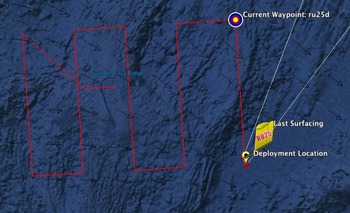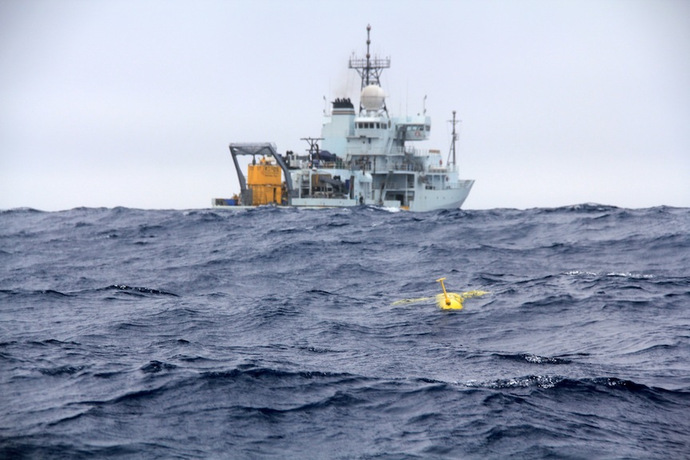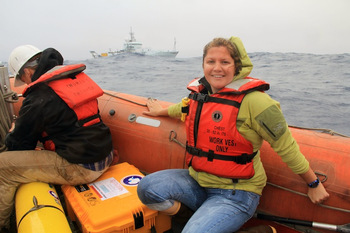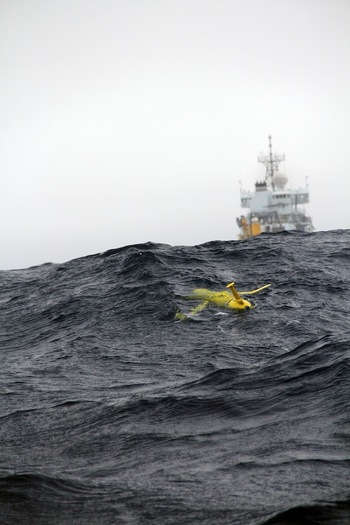Contributed by Tina Haskins, Rutgers University
Today marked the beginning of a new collaboration between Rutgers University and the University of Washington with the deployment of RU25. The Slocum Electric Glider, which is capable of diving to 1000 meters deep, will spend the next ten days surveying the water column around the Axial Seamount. The AUV will cover approximately 180 kilometers while sending back CTD data every 3-4 hours. Not only does this data become immediately available to the scientists on board the R/V Thompson but it also goes live to the web. The glider can be tracked by simply going to the Rutgers glider website.
After running some initial tests on the boat the glider was ready for deployment. In order to safely deploy the glider we employed the use of one of our small boats. We were able to load the glider and crew into the small boat which was then slowly lowered down to the water. It wasn't the calmest of days which lead to all participants of the deployment crew getting quite wet. Once we had some clearance from the R/V Thompson it was time to launch the glider. The first test dive was on over depth mission, this checks to make sure the glider is properly ballasted and is able to do a single dive and climb; otherwise known as a yo. RU25 successfully completed its over depth mission and was able to advance to a longer test mission in which it does multiple yo's over the course of 20 minutes. After it surfaces data files are transfered to analyze the flight dynamics of the glider. RU25 was deemed sea worthy and stable for deployment. The deployment crew returned to the Thompson and RU25 started its mission.
Over the next several days the glider will be monitored closely by Rutgers personnel both aboard the R/V Thompson and in New Jersey. Gliders are unique in that they allow for real-time adaptive sampling. The initial game plan can be seen in the file to the left, however, if scientists come across something unique in the data the path can be altered.




